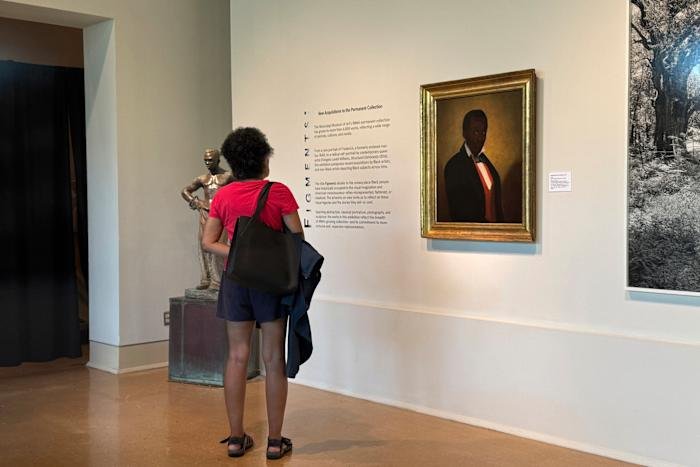
JACKSON, Miss. — With strongly haunting eyes and an enigmatic expression, “Picture of Frederick,” an enslaved guy repainted circa 1840, gazes out at site visitors of the Mississippi Gallery of Art.
A bit better right into the gallery is Delia, a Black lady worn red and putting on a headscarf that births a likewise unknowable expression. Both of pictures are the just well-known preemancipation paints of enslaved individuals in Mississippi.
Now, for the very first time, they hang with each other for the general public to see.
” I was fascinated by the paint,” gallery site visitor Staci Williams claimed. “The shades, the expression. His humankind appeared to embark on of the web page.”
The pictures stimulate inquiries concerning that Frederick and Delia were, why they were repainted and what experienced their minds as their faces were recorded stroke by stroke for generations to see.
” We do not understand, as an example, if either of these individuals had the selection to rest for the picture. We do not understand if they had the selection of what they were putting on when they were repainted,” claimed Betsy Bradley, the Laurie Hearin McRee supervisor of the gallery. “They absolutely weren’t enabled to have their very own picture.”
The gallery purchased “Picture of Frederick” in collaboration with the Crystal Bridges Gallery of American Art in Bentonville, Arkansas. The galleries will certainly pass the picture backward and forward, each showing it for numerous years each time.
Bradley claimed buying the picture raised made complex sensations. Up until emancipation released him, Frederick was thought about residential or commercial property. Currently, greater than 150 years later on, his picture is residential or commercial property, dealt to the greatest prospective buyer.
” If it allows us to have crucial discussions with each various other concerning the human expense of enslavement and why it must not ever before occur once more, after that having it in a public area can be significant,” Bradley claimed.
Since the 1860s, “Picture of Frederick” has actually been shown at Longwood, an antebellum estate in Natchez, Mississippi, that came from the household of his enslavers. There, Frederick’s similarity was utilized to whitewash background.
According to research study by the Neal Public Auction Business, which marketed the paint to the Mississippi Gallery of Art, tourist guide in the 1970s educated the general public that Frederick had actually matured together with his enslaver Haller Nutt, and both were friends. They asserted Nutt released Frederick and described him by the putting down name “Uncle Frederick.”
In reality, Frederick looked after various other servants on the vineyard. He accumulated information on area manufacturing, evaluated expanding problems and functioned as a supervisor. His duty was essential, and he and his household might have gotten much better living problems therefore.
Frederick had to do with 70 when the Civil Battle finished. He took the last name Baker and ended up being commissioned. Before emancipation, Black individuals were not enabled to wed. Frederick wed a minimum of 69 pairs after it ended up being lawful.
Less is understood about Delia. Her picture was repainted in between 1840 and 1849. She seems stitching, which leads some to think she functioned inside her enslavers’ home. Delia’s picture was maintained by the offspring of her enslavers till the Mississippi Gallery of Art purchased it 2019.
Both pictures are one-of-a-kind because Frederick and Delia are the single topics of the jobs. Usually, Black individuals were repainted together with white individuals, likely as a means of highlighting the white individual’s wide range.
Frederick is worn regal clothes– something he likely would not have actually put on in his daily duty on the vineyard. Both are illustrated in a three-quarters structure, which was utilized for sensible and crucial topics.
Upon taking a look at “Picture of Frederick,” Williams claimed she really felt an unusual combination of satisfaction and despair.
” I question what he’s believing,” Williams mused. “He does not appear to provide anything away.”
Copyright 2025 The Associated Press. All civil liberties scheduled. This product might not be released, program, revised or rearranged without authorization.



